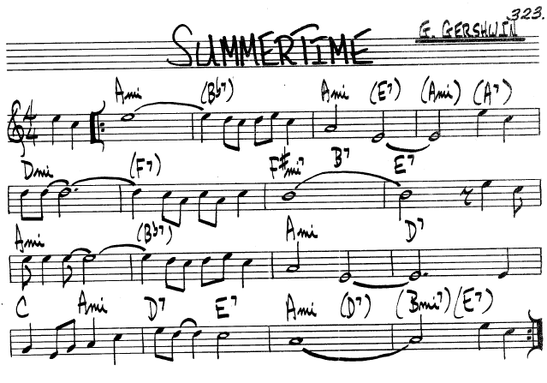I think to really understand the answer to that question, or even the question itself (did I just blow your mind?) you have to know the history of the Real Book and the tunes.
Most of the songs in the Real Book are jazz standards, that is to say tunes out of the Great American songbook, originally written for Broadway by composers such as George and Ira Gerswhin, Irving Berlin, Cole Porter, etc. Jazz musicians took these songs, which were popular music during the time they were written, and simplified (or altered) the changes so they could improvise over the forms and chord structures.
Some Berklee students in the 70's were listening to these jazz musician's interpretations of the tunes and wanted to play them with each other so they transcribed the changes off the record and wrote them down. The first Real Book was born.
So let's call the Real Book what it really is: Undergrads (often inaccurate) transcriptions of Great American Songbook tunes interpreted by jazz players. That may sound a bit harsh, but it’s not really meant to be. I just want you all to realize what the Real Book started as.
To further explain, let’s look at the life of “Bye Bye Blackbird” as featured in Real Book II.
1. Tin-pan-alley composer Ray Henderson writes the song in 1926. Chord changes are fairly complex, changing a few chords every measure.
2. Miles Davis plays the song in 1957. He wants to improvise over the chords so he simplies the chord changes – now there’s one chord for the first four measures, instead of eight. Miles also alters the the chords of the Bridge in his new version of the tune.
3. A Berklee student, let’s call him “Johnny,” hears the Miles Davis version of “Bye Bye Blackbird” and wants to play it with other players. He transcribes the Miles Davis changes as best as he hears them and writes them in the Real Book.
4. Generations of young jazz players play “Bye Bye Blackbird” using the changes that “Johnny” transcribed 40 years ago.
See what's wrong with this? Often, up-and-coming jazz players get stuck playing songs thinking that the Real Book chord changes are the only way to play a certain song. When in reality, there are so many different ways to play the same jazz standard!
The chord changes to jazz songs are not meant to be set in stone. They are meant to be interpreted, to be improvised, to be living and breathing and alive! To really get inside the changes of a jazz standard and improvise them on the spot takes a strong understanding of theory and chord structures and goes beyond the scope of this blog post (maybe something on this in the future).
Here are a few things you could do to change the way you think about the Real Book changes:
First, you could go back to the original Broadway sheet music. Changes to these originals scores are often far more complicated (and cooler sounding) than anything you’d ever find in the Real Book. If you don’t believe me, try and find the original piano reductions to anything by Cole Porter or George Gershwin. Did you do it? You’re welcome.
Second you could try to read the changes right out of the Real Book. Just realize that what you are reading is someone’s transcription of one player or group’s interpretation of a tune. Often, in the Real Book, there’s a indication as to what version of the song the transcriber was listening to. Download that version and play along, listening for the accuracy of the chords. Hint: The Real book might not be right!
Also, consider what version of the Real Book you are using. Although there’s a feeling of nostalgia when I read out of my old ripped up illegal Real Book, oftentimes those transcriptions are downright wrong. Do yourself a favor and get the new legal version of the Real Book (Hal Leonard) or The New Real Book (Sher Music). In my experience, these are much more accurate.
Last, try this (slightly more advanced) exercise I picked up from David Berkman, a teacher of mine in graduate school.
1. Pick a jazz standard you like to play out of the Real Book.
2. Find three recordings (or 2 or 5) of the song and figure out the chord changes.
3. Get your mind blown when you realize that ALL THE VERSIONS of the same jazz standard have completely different chord changes.
4. Create a new version of the jazz standard that borrows your favorite changes from all the different versions.
The first step in recovery is admitting you have a problem. Once you know the Real Book for what it is, that’s half the battle. The Real Book chord changes are not always completely accurate, but that’s ok. Can you still use it to play through a tune? Yes. Can you bring it to a rehearsal and run tunes with a band? Of course. Just remember that the chords you see in the Real Book are not the only set of chords you can play for any given song.
Happy Shedding!


 RSS Feed
RSS Feed